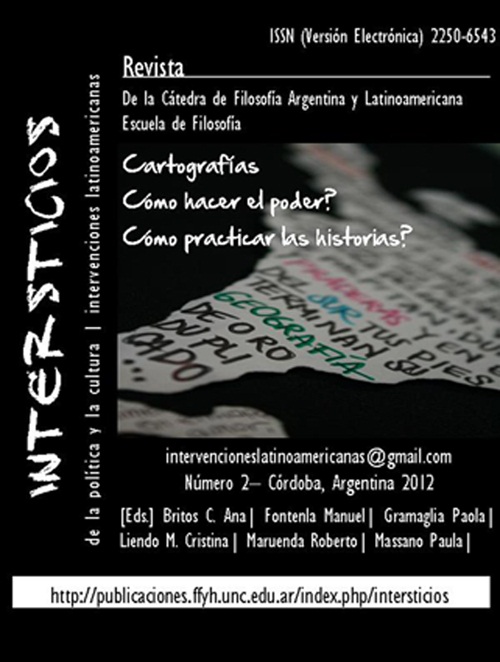CARTOGRAFÍAS DEL CUERPO: LOS LÍMITES DE LO NARRABLE
Abstract
Resumen
¿Cómo es que llegamos a escribir el cuerpo? El gesto de la escritura es de por sí corporal, sin embargo las literaturas, incluso la filosófica, luchan siempre por apresar una corporeidad que les escapa y excede. En tanto cuerpos estamos todos expuestos, vulnerables, dependientes primariamente entre otros y constituidos por esa relacionalidad y por el desposeimiento que nos provocan dichas relaciones. Somos seres por definición físicamente dependientes unos de otros y vulnerables los unos frente a los otros, aunque la violencia que sufrimos como cuerpos está siempre distribuida –políticamente- de forma diferencial. ¿De qué forma aparecen las marcas de esas violencias en la escritura? ¿Cómo plasmamos nuestra vulnerabilidad en la palabra? ¿Qué relatos podemos tematizar, y cuáles aparecen como inenarrables, o cubiertos bajo el velo de la ininteligibilidad? Siguiendo algunos desarrollos conceptuales propuestos por la filósofa Judith Butler, nos proponemos atender a los marcos de inteligibilidad que hacen que ciertos cuerpos sean considerados como normales, y otros no, y cómo estos cuerpos irreconocibles son ignorados en su capacidad de habla, privados de la circulación de la palabra, y difícilmente escuchables en los relatos, por ejemplo, de la violencia que se les infringe, de manera física y hasta epistemológica.
Palabras clave: escritura- cuerpo – violencia.
How do we get to write our bodies? The gesture of writing is itself physical, corporal; yet all literatures, even the philosophical one, always struggle to capture the essence of a body that escapes and exceeds the writing. Existing under the shapes of bodies, we are all exposed, vulnerable, primary dependent on each other and we are as well built up by this relationality, and by the dispossession that those relationships cause on us. We are, by definition, beings physically dependent one on each other and vulnerable face to the others. Nevertheless, the violence we suffer as the bodies we are is always politically distributed in different ways. How do these traces of violence appear in writing? How do we embody our vulnerability in the written word? Which stories can we discuss, and which of them appear as unspeakable, or covered by the veil of unintelligibility? Following some conceptual developments, proposed by the philosopher Judith Butler, we aim to go through the frames of intelligibility that allow certain bodies to be considered as normal, and others as not normal at all. Furthermore, we will question the way in which these unrecognizable bodies are ignored in their capacity of speaking, deprived of the circulation of the speech and hardly listened in the stories of the violence that they suffer, physically and even epistemologically.
Key words: writing – body – violence.
Downloads
Downloads
Published
Issue
Section
License
Authors who have publications with this journal agree to the following terms:
a. Authors will retain their copyright and grant the journal the right of first publication of their work, which will simultaneously be subject to the Creative Commons Attribution License that allows third parties to share the work as long as its author and first publication in this journal are indicated.
b. Authors may adopt other non-exclusive license agreements for distribution of the published version of the work (e.g., deposit it in an institutional telematic archive or publish it in a monographic volume) as long as the initial publication in this journal is indicated.
c. Authors are allowed and encouraged to disseminate their work through the Internet (e.g., in institutional telematic archives or on their web page) after the publication process, which may produce interesting exchanges and increase citations of the published work (see The effect of open access).


